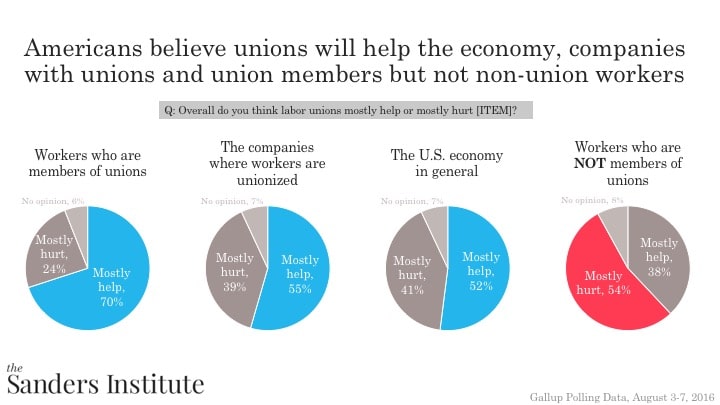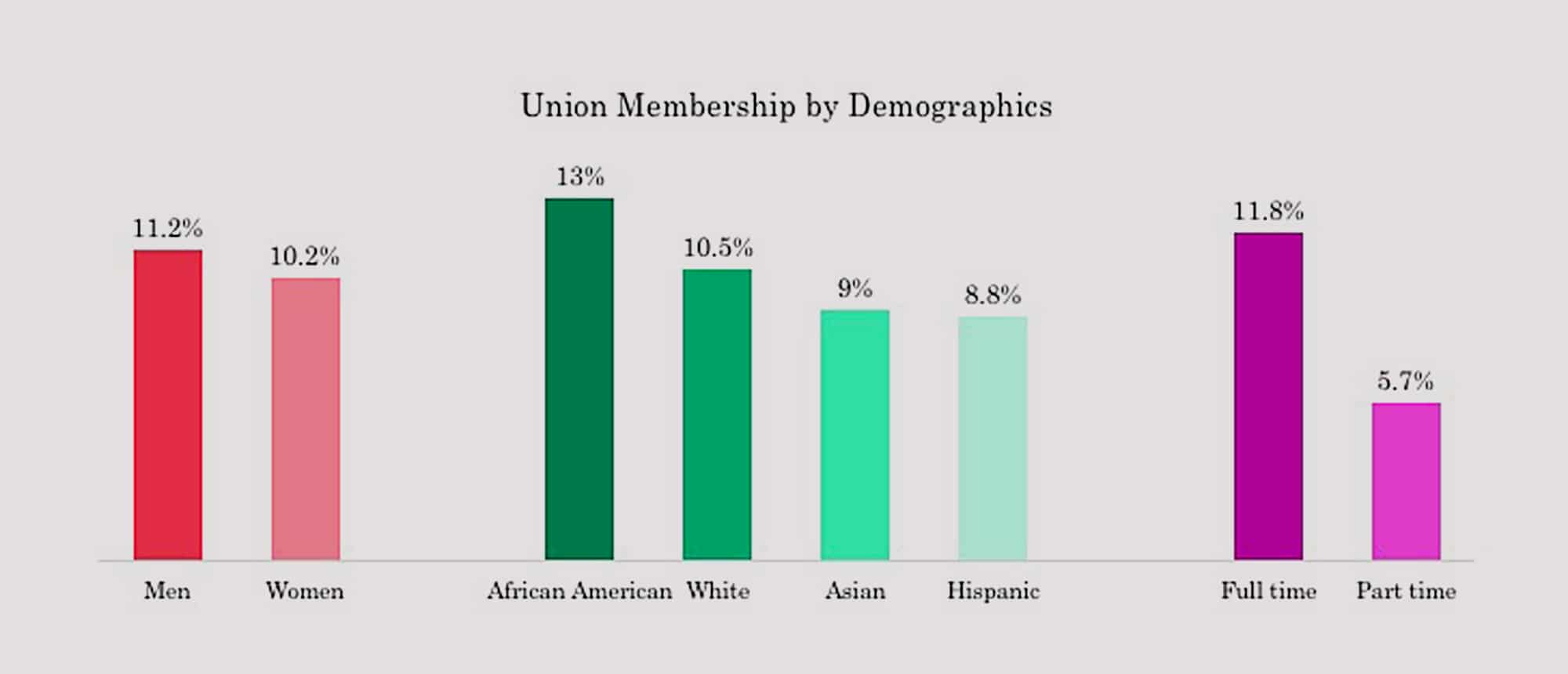Union Membership Data And Polling
Union membership (looking at both public and private sector membership) has declined since1983, the first year for which comparable union data are available. In 2016, 10.7% of both private and public sector workers were members of unions. This percentage has declined since 1983 when union members made up 20.1% of the workforce.
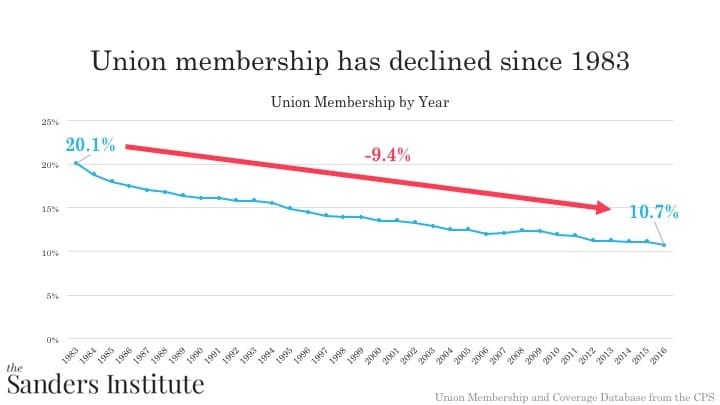
States with higher union membership than the national average tend to be states in the Northeast and West while states with lower union membership than the national average tend to be in the Midwest and South. The states with the highest union membership are New York (23.6%) and Hawaii (19.9%) while the states with the lowest union membership are South Carolina (1.6%) and North Carolina (3%).
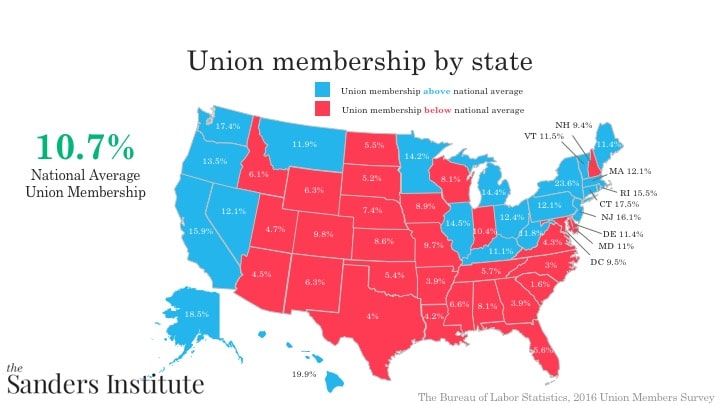
Union membership varies greatly between the public and private sectors. Union membership in the private sector is 6.4% while union membership is 5 times that in the public sector (34.4%). The most unionized professions in the private sector are utilities (21.5%) and transportation and warehousing (18.4%). The most unionized professions in the public sector is the local government where over four in ten workers are part of a union.
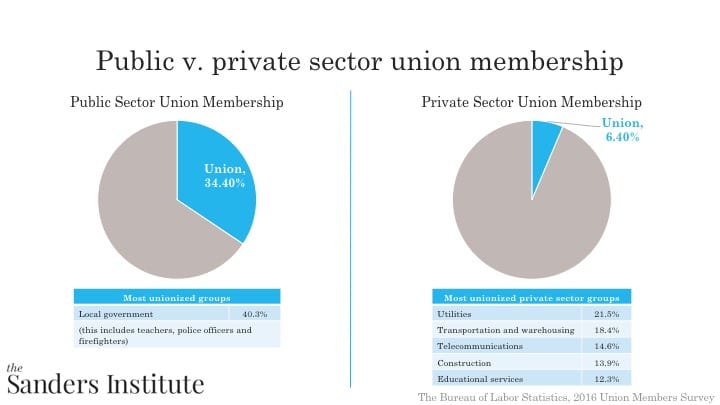
Union membership differs by certain demographics. Men (11.2%) are slightly more likely to be a union member than women (10.2%). African Americans (13%) are the most unionized race/ethnicity, followed by white (10.5%), Asian (9%), and Hispanic (8.8%) workers. Finally, full time workers (11.8%) are more likely to be unionized than part time workers (5.7%).
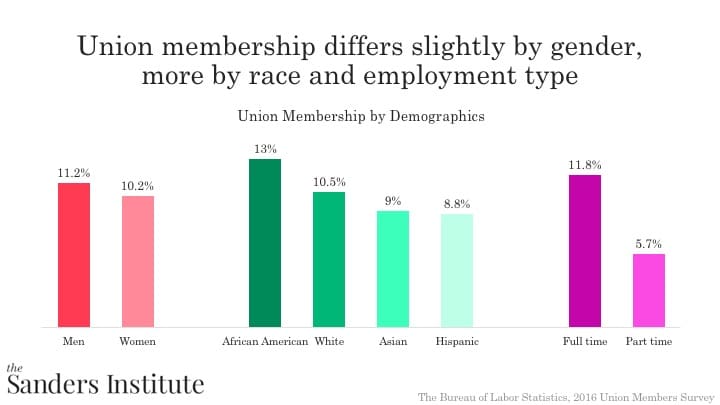
Union workers’ median weekly earnings of $1,004 a week are 20% higher than the median weekly earnings of non-union workers ($802).
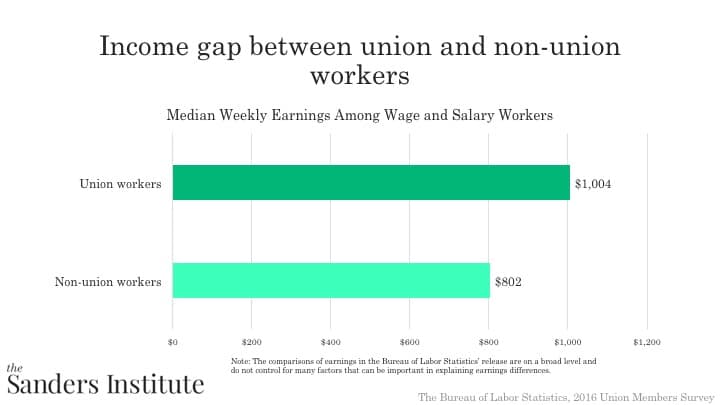
PUBLIC OPINIONS OF UNIONS
A majority of Americans (56%) approve of unions. However, this is lower than it has been in the past. Union approval was highest in the 50s with 75% approval in 1953 and 74% in 1957. After the 50s, union approval decreased. It reached its lowest point in 2009 when a plurality (48%) of Americans approved of unions, only slightly more than the 43% who disapproved of unions. Since that low point, union approval has increased to its current level at 56%.
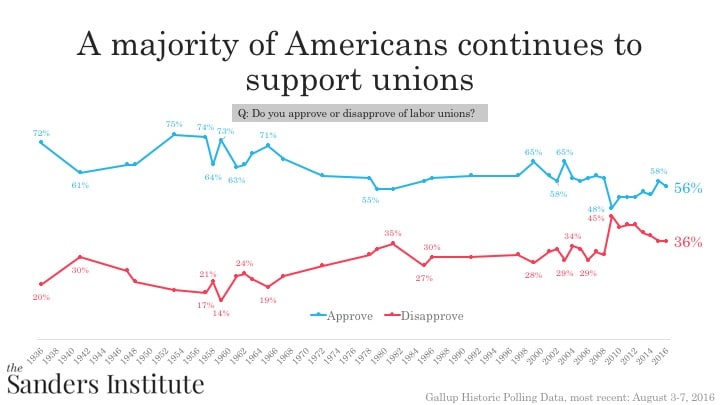
Despite a majority of Americans approving of unions, Americans are divided on how much influence unions should have. A slight plurality think that unions should have more influence (36%) while only slightly fewer think that unions should have less influence (34%), and only slightly more than a quarter of Americans (26%) think that unions should have the same amount of influence.
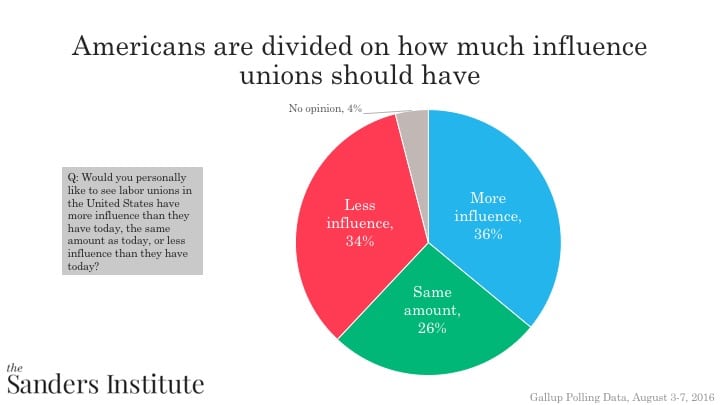
A large majority of Americans (70%) believe that unions mostly help the workers who are members of unions. Majorities of Americans also believe that unions help the companies where workers are unionized (55%) and the U.S. economy (52%). However, a majority (54%) of Americans believes that unions mostly hurt workers who are not members of unions.
